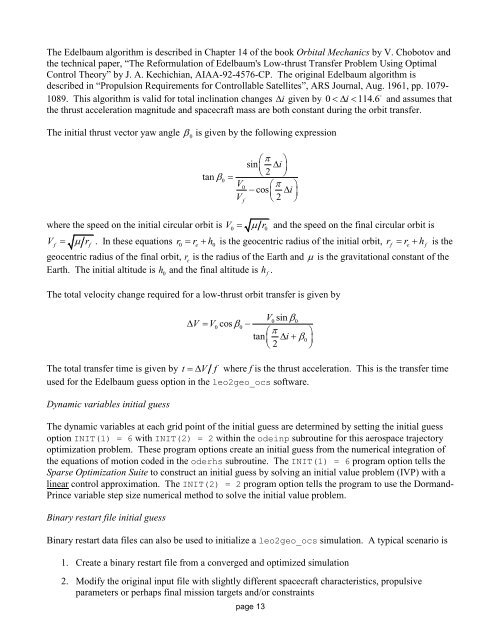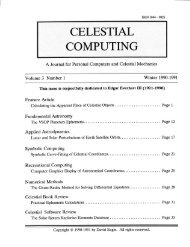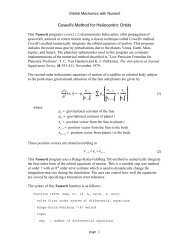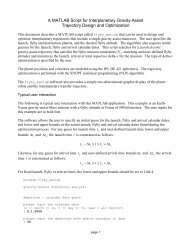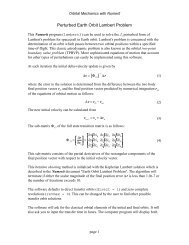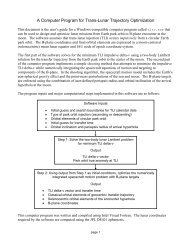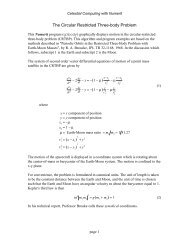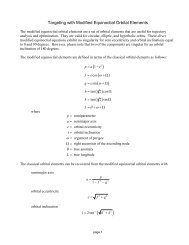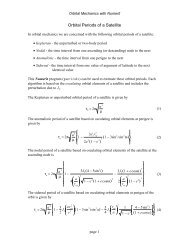PDF document - Orbital and Celestial Mechanics Website
PDF document - Orbital and Celestial Mechanics Website
PDF document - Orbital and Celestial Mechanics Website
Create successful ePaper yourself
Turn your PDF publications into a flip-book with our unique Google optimized e-Paper software.
The Edelbaum algorithm is described in Chapter 14 of the book <strong>Orbital</strong> <strong>Mechanics</strong> by V. Chobotov <strong>and</strong>the technical paper, “The Reformulation of Edelbaum's Low-thrust Transfer Problem Using OptimalControl Theory” by J. A. Kechichian, AIAA-92-4576-CP. The original Edelbaum algorithm isdescribed in “Propulsion Requirements for Controllable Satellites”, ARS Journal, Aug. 1961, pp. 1079-1089. This algorithm is valid for total inclination changes i given by 0 i 114.6 <strong>and</strong> assumes thatthe thrust acceleration magnitude <strong>and</strong> spacecraft mass are both constant during the orbit transfer.The initial thrust vector yaw angle 0is given by the following expressiontan 0VV0fsin i 2 cosi 2 where the speed on the initial circular orbit is V0 r0<strong>and</strong> the speed on the final circular orbit isVf rf. In these equations r 0r e h 0is the geocentric radius of the initial orbit, rf re hfis thegeocentric radius of the final orbit, r eis the radius of the Earth <strong>and</strong> is the gravitational constant of theEarth. The initial altitude is h 0<strong>and</strong> the final altitude is h f.The total velocity change required for a low-thrust orbit transfer is given byV0sin0V V0cos0tan i 0 2 The total transfer time is given by t V f where f is the thrust acceleration. This is the transfer timeused for the Edelbaum guess option in the leo2geo_ocs software.Dynamic variables initial guessThe dynamic variables at each grid point of the initial guess are determined by setting the initial guessoption INIT(1) = 6 with INIT(2) = 2 within the odeinp subroutine for this aerospace trajectoryoptimization problem. These program options create an initial guess from the numerical integration ofthe equations of motion coded in the oderhs subroutine. The INIT(1) = 6 program option tells theSparse Optimization Suite to construct an initial guess by solving an initial value problem (IVP) with alinear control approximation. The INIT(2) = 2 program option tells the program to use the Dorm<strong>and</strong>-Prince variable step size numerical method to solve the initial value problem.Binary restart file initial guessBinary restart data files can also be used to initialize a leo2geo_ocs simulation. A typical scenario is1. Create a binary restart file from a converged <strong>and</strong> optimized simulation2. Modify the original input file with slightly different spacecraft characteristics, propulsiveparameters or perhaps final mission targets <strong>and</strong>/or constraintspage 13


